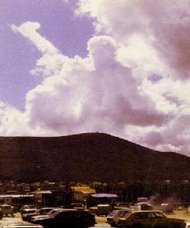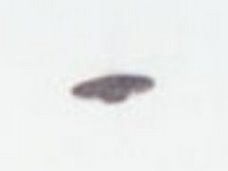 Most experts on mythology and folklore argue that legends of dragons are based upon ordinary snakes and similar creatures coupled with common psychological fears amongst disparate groups of humans.
Most experts on mythology and folklore argue that legends of dragons are based upon ordinary snakes and similar creatures coupled with common psychological fears amongst disparate groups of humans.Some believe that the dragon may have had a real-life counterpart from which the various legends arose — typically dinosaurs or other archosaurs are mentioned as a possibility — but there is no physical evidence to support this claim, only alleged sightings collected by cryptozoologists. In a common variation of this hypothesis, giant lizards such as Megalania are substituted for the living dinosaurs. Some believe dragons are mental manifestations representing an assembly of inherent human fears of reptiles, teeth, claws, size and fire in combination.
Dinosaur and mammalian fossils were occasionally mistaken as the bones of dragons and other mythological creatures — for example, a discovery in 300 BC in Wucheng, Sichuan, China, was labeled as such by Chang Qu. It is unlikely, however, that these finds alone prompted the legends of such monsters, but they may have served to reinforce them.
Dragons have been in mythology and legend for thousands of years. Almost every country in the world as some sort of dragon story. It is almost certain that more myths and legends of these fascinating creatures will fill the heads of children and adults alike and artists will continue drawing, painting, and creating dragons of all sorts, as long at their imaginations allow.
When most people think "dragon" they most likely think of the Western dragon. Western dragons are usually portrayed as evil, mean, and bloodthirsty. They were also known to have huge hoards of gold and jewels hidden in their lairs. The most famous dragons are portrayed as Western-type dragons: St. George and the Dragon, Beowulf and the Dragon, and Draco in the movie DragonHeart. Some stories have the western dragon as the Devil in Christianity. Other stories in legend say that eating a dragons' heart will give the consumer the power of understanding birds, eating the dragons' tongue enables the person to win any argument, and rubbing the dragons' blood on skin will protect against stab wounds. Another myth references Vlad Drakul to mean Son of the Dragon, or Devil.
The end of the dragon came with Christianity, and knights that were eager to prove their faith. The knights quickly discovered that dragon-hunting was very profitable, and soon most the dragons in the world were destroyed in a very short time. Vikings had dragon figureheads on the prow of their ships. The dragons on the ships were believed to endow keen site and cunning to the Viking warriors. Today the Welsh flag still has a red dragon on a green/white background, and the red dragon is their national symbol.
In China dragons are known as Lung. There are four main kinds of Lung: Tien-lung , The Celestial Dragon: who protect the places of the Gods, Shen-Lung, The Spiritual Dragon: who control the wind and the rain, Ti-Lung , The Earth Dragon which control rivers, and water on the Earth, and Fut's-Lung , The Underworld Dragon which guards precious metals and gems. Separate dragons control the rivers of the North, South, East and West. The commander of all the River Dragons is Great Chien-Tang who is blood red, has a firey mane, and is 900 feet long.
Eastern dragons are portrayed as good, kind, and intelligent. Oriental Dragons have the most recorded history in the world, especially in China going back thousands of years. In history they have a very close link to the weather. It is said that some of the worst flooding in Asia's History were caused when a mortal has upset a dragon. In Chinese history, the 5 toed dragon is the symbol of power, and are considered "Imperial Dragons". Long ago, it became law in China that only the Emperor could have a five-clawed dragon displayed on his robes or illustrated on anything the Emperor owned. It was usually a Yellow dragon, thought to be the most superior of all the colored dragons. If someone other than the Emperor was caught wearing the symbol of the 5-toed dragon, he was put to death.
Eastern dragons are still shown in parades around the world celebrating the Chinese New Year with the Dragon Dance.
Did the dragon once live?
All of the Oriental dragons were intimately associated with water. Dragons lived in lakes and rivers and seas, even in raindrops. They controlled the tides, floods and rainfall. If they really existed, then a source that immediately comes to mind is the Chinese alligator, Alligator sinensis. They are not as large as their American cousin, ranging from an average two metres in length to sometimes three metres. But they are dangerous, reptilian and water-based - all good reasons for linking them to the Oriental dragon. But only if you haven’t heard of the predecessors of the real-life Komodo dragon...
Australian monitor lizards all belong to the genus Varanus. They are easily identifiable by their streamlined shape, elongated neck, semi-erect posture, and a forked tongue - which can give the effect of fire-breathing. They all look very similar except for their size differences, which are extreme to say the least. The smallest is the pygmy monitor Varanus brevicauda (20 centimetres long, weighs 8-10 grams). The largest in Australia is the perentie or Varanus giganteus, which can attain a length of two metres.
Larger still are the Komodo Dragons (Varanus komodoensis) of Indonesia, a country that the ancient Chinese would certainly have visited. They can reach lengths of three metres and weigh 150 kgs, making them the world’s largest lizards. They are formidable predators, like crocodiles that are able to run quickly across land. They were probably the reason that the stegodonts (pygmy elephants) became extinct in this area. They might even have wiped out the 1-metre tall, miniature humans, Homo floresiensis, who lived there up until 12,000 years ago.
These dragons were previously more widespread, with evidence of them once occurring in Mongolia coming to light. And in Queensland, Australia, only becoming extinct 19,000 years ago (take that date with a pinch of salt), was a bigger lizard still, a cousin of the Komodo dubbed Megalania prisca.
Megalania prisca, as we have learned from fossil evidence, grew to be a staggering seven metres in length and weighed 600 kgs. Although it was technically a lizard, it must have had the presence of a dinosaur, and almost certainly ate a few of the humans of that era. But it’s usual meal was more likely to have been rhinoceros-sized wombats. [Strange days indeed with gigantism seeming to be rampant.] These meals are believable when you consider that Komodo dragons have been known to kill water buffalo weighing three times more than themselves.
So where are we heading? On the one hand there are myths connecting dragons to global destruction and rebirth. On the other are links to DNA, ancient languages, ancient calendars and the I Ching. Does all this suggest that the mythical dragons were rooted in reality, that knights in shining armour actually killed real dragons?
The jury is still out on this one!















